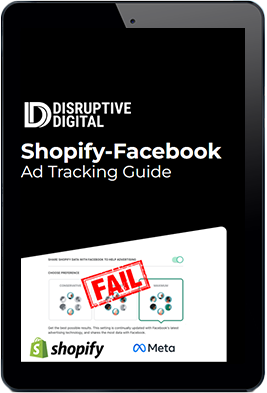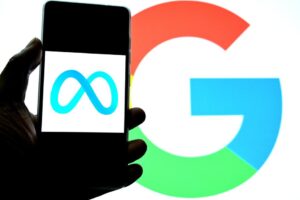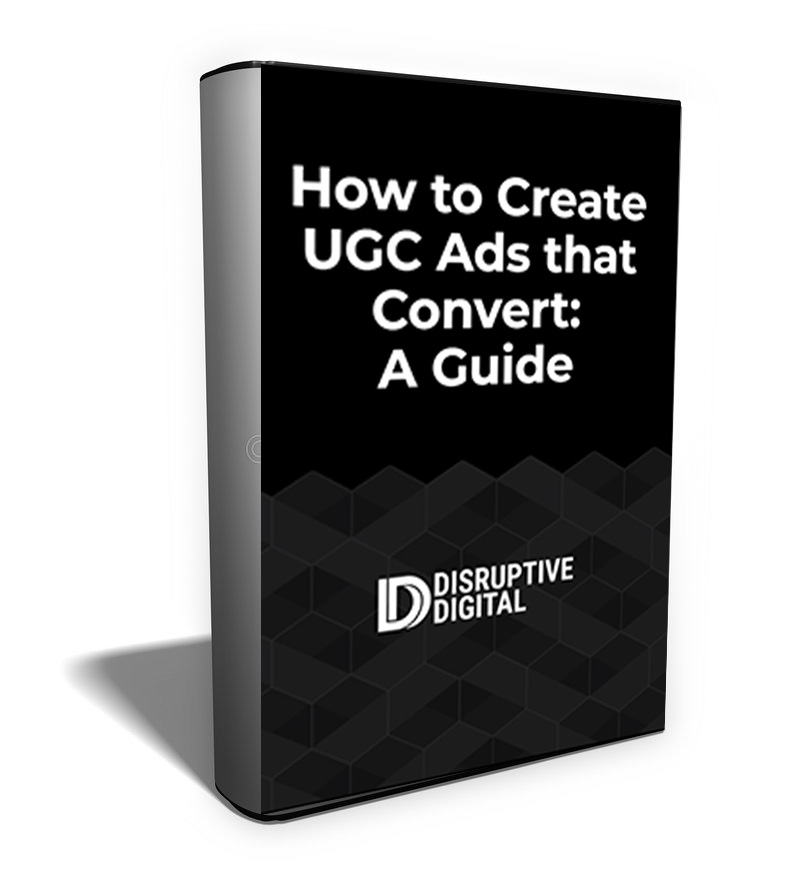When Apple released its new iOS 14 mobile operating system last year, many predicted a comprehensive change in the advertising industry. And they were quickly proven right; less than one month after its release, one report showed that 96% of U.S. users opted out of having their actions tracked by apps like Facebook.
In the age of data privacy (and the way Apple designed the opt-in prompt), that’s not necessarily surprising. But it proved to be a major challenge for advertisers, who could no longer rely on data from ad networks like Facebook to learn about their users, track conversions, and optimize their campaigns accordingly.
The most commonly cited adjustment seemed simple: brands and advertisers would have to rely on other means to gain that much-valued first-party audience data. But of course, a step like that is easier said than done. Paid ads had always been the best way to acquire this type of data at scale. Nearly one year into the App Tracking Transparency feature, here’s where we stand–and how brands can continue to mitigate the impact of iOS 14.
The Challenges With First-Party Data Strategies
Hypothetically, shifting your focus to more first-party data from your own online presence, like your website and app, makes intuitive sense. Brands that can gain information from their audiences first-hands don’t need to rely on third-party app tracking for insights and optimizations.
Unfortunately, that approach also comes with a significant limitation: Relying on your own first-party data only works with audiences who are already invested in your brand. In other words, they will only navigate to your app and website, and provide information to you, if you have built a significant amount of credibility with them already.
While that solution might work for brands with significant cache and brand recognition, it’s a more difficult proposition for niche businesses and industries in which awareness is just as crucial as the final conversion to customer.
The resulting suggestion, then, was to shift to more organic marketing efforts like content marketing, SEO, and organic social. After all, the argument goes, these more value-based means of gaining awareness and attention can effectively build credibility, making audiences want to provide you their information in the process.
Organic and content-based digital marketing tactics certainly play a significant role in almost any comprehensive strategy. At the same time, they fall short in replacing one important piece of the paid ad equation: the halo effect of paid digital when it comes to reach.
FREE GUIDE
Digital Marketing Attribution and Measurement Roadmap
We layout a roadmap of all the measurement and attribution tools direct response advertisers should use to better understand their media’s impact.
The Halo Effect of Paid Social on Other Digital Tactics
Here’s an important truth: digital marketing never exists in a vacuum. Every tactic has at least some secondary effect on others, all working together to reach your marketing goals.
Facebook, for example, found that in addition to driving their own traffic and conversions, digital ads resulted in a 19% comparative lift in organic search traffic and 10% lift in paid search traffic.
But that’s not all. Another study on ad lift found that Facebook ads drove more quality traffic, and lower-cost leads, through channels like search even when the results didn’t come directly from its ads. The same study estimated that as a result, last-click attribution undervalued the effectiveness of Facebook ads by almost 50%.
The takeaway: running paid social ads doesn’t just come with its own benefits. When used the right way, it can lift the effectiveness of other channels as well, even when its own results don’t show it. The more qualified users a Facebook ad reaches, the more qualified search volume those ads drive.
Take that away by focusing on organic channels only to gain credibility and first-party data, and the results could be devastating. It doesn’t help, of course, that thanks to the iOS 14 update, the cost of CPM has been steadily rising while reach has been steadily falling at the same time.
Why Better Creative Is Not Enough to Mitigate Lost Reach
In the months since the initial release of the iOS update, one thing has become clear: especially on social media, reaching your audience has become more expensive.
Largely because of shrinking audiences due to users who have opted out of data tracking and the comparatively higher value of in-feed apps due to a shrinking audience network, CPMs have risen steadily and across industries. One study saw a 30% CPM increase, while another study of 350 Facebook advertisers spending more than $10,000 monthly saw a 29% year-over-year increase.

As long as budgets stay the same, a higher CPM naturally leads to a lower reach. One common solution has been to improve creative and landing pages, which is certainly commendable. But while that might lower acquisition cost and somewhat lessen the negative effects on direct conversions, it doesn’t completely eliminate the issue.
One problem still remains: losing ad reach has a knock-on effect on the rest of your strategy. We saw this for a couple of our ecommerce clients, who were able to improve their cost-per-acquisition and maintain a positive performance on their paid Facebook strategy–but, because of the above-mentioned halo effect, saw a decrease in their organic search and social reach at the same time.

Better creative, and better landing pages, can only go so far. As CPM continues to increase a search for more sustainable solutions to mitigate the negative effects of iOS 14 will only become more imperative.
FREE GUIDE
Shopify-Facebook Ad Tracking Guide
These improvements in performance allowed our clients to have more faith in being able to scale Facebook again in a way that wasn’t possible since iOS 14 initially rolled out.
Two Solutions to Acquire More Qualified First-Party Data at Scale
Especially for marketers hit hard by the data lost in the wake of the iOS 14 update, adjustments should be a part of the daily agenda. Unfortunately, no adjustments can fully replace the data benefits that had become such an important benefit of paid social. However, two potential solutions can at least mitigate the impact, keeping savvy marketers on the continued path to success.
1. The Potential Promise of Facebook Conversion Leads Optimization
The first option is a Facebook Ads optimization for conversion leads. As described by the platform, this setting “optimizes to increase the quality of your leads” by showing ads to Facebook users most likely to become customers.
Think of it as the next step from conversion optimization. Marketers can install a conversion pixel in their CRM, which allows Facebook to analyze common characteristics of leads who keep an active funnel trajectory. The marketer determines the stage at which a lead is considered to be “high quality,” and the platform delivers the ads to the people most likely to reach that stage.

Crucially, this is a different set-up from Facebook’s Offline Conversions API, which only tracks actual conversions. Conversion Leads Optimization doesn’t just measure these conversions, but actively optimizes the campaign’s targeting and bidding to maximize the chances of reaching them.
This potential solution is especially relevant for lead ads, which drive new contacts into your CRM. Through the Conversion Leads Optimization, your campaign self-optimizes for a purchase or sales-qualified lead down the line, ultimately leading to more qualified first-party data, cheaper campaigns, and more relevant results.
The downside, of course, is that this approach is an alternative for the lost reach due to iOS 14, but not a direct replacement. Similarly to improving your creative and landing pages, your reach will still be lower, mitigating the halo effect described above.
It’s also important to point out that this option lends itself to long sales cycles. If your lead funnel is short or operates at a high velocity, Facebook will have fewer touch points and qualifications to optimize for.
2. Leveraging Emerging Channels Like TikTok for Greater Reach
To replace that lost reach, the other alternative is branching out. That means finding an alternative ad channel with a lower CPM, similar scale, and well-qualified traffic. One year in, one potential option stands out above the others: TikTok.
You likely know TikTok as one of the fastest-growing social media networks in the world, surpassing 1 billion global monthly active users earlier this year. Its advertising model and adoption rate are still developing, leading to potentially significant opportunities for brands and marketers willing to jump on board.
In our experience, CPMs on TikTok campaigns have been up to 50% lower than similar campaigns run through Facebook, making this an increasingly relevant alternative for many industries. Conversion rates have also been slightly lower, but without decreasing at the same rate as CPM.
In other words, a more active paid presence on TikTok allows brands to reach more people at comparatively cheaper rate, with conversion drops that are insignificant enough to sufficiently fill the funnel and increase first-party data more efficiently.
Of course, TikTok also comes with some limitations that are important for advertisers to keep in mind. While the platform has found increased adoption across demographics in the past two years, its core audience still skews relatively young, with 60% of its U.S. users between the ages of 16 and 24. B2B brands looking to reach seasoned business professionals may struggle more to do so on TikTok than they would through their traditional Facebook campaigns.
Still, this solution is a viable alternative to at least partially replace the halo effect and reach lost by Facebook campaigns over the past years. And, like TikTok, other emerging channels may lead to similar effects in the near future.
Will New Tactics to Gain First-Party Data Negate the Negative Effects of iOS 14?
To summarize, both lead conversion optimization and newer channels like TikTok can at least mitigate some concerns that the new tracking restrictions of iOS 14 have brought with them. It’s important to note, though, that neither can completely offset the impact of iOS 14 on both organic halo effects and first-party data collection.
While better and more efficient than most optimization alternatives, Facebook’s conversion leads optimization is not likely to outperform a conversion campaign from pre-iOS 14 times in terms of effectiveness. Meanwhile, TikTok has been impacted by Apple’s update as well, and may never reach the same level of efficiency, or same broad audience potential, that Facebook had before the iOS update.
Neither of these solutions are antidotes to Apple’s App Tracking Transparency update. Marketers who expect them to be are doomed to fail. But that doesn’t make them inefficient. Their ability to mitigate at least some of these negative effects still make them worth implementing in any comprehensive digital campaign.
The reach, user time on platform, and user behavior make TikTok well worth a test within your larger efforts. Given more time to grow, it may even approach Facebook’s scale and efficiency at some point in the long-term future. For now, though, it’s an intriguing channel with the potential for decent current results that may position you as an early adopter as the platform continues to grow.
Facebook conversion leads optimization, meanwhile, works well as a late-funnel complement to other, more reach-based campaigns. If nothing else, it allows you to reach more qualified users at scale, with the needed efficiency to improve your first-party data collection.
The Future of Digital Marketing in the Age of iOS 14
Nearly a year into iOS 14 and the first-party data collection challenges it brought with it, we’re beginning to see which of the many recommendations from last year are actually starting to bear fruit. Ultimately, though, one thing remains clear: digital ads are not likely to approach the effectiveness of previous years anytime soon.
That, in turn, makes one truth of digital marketing even more important: continuous testing and an ongoing improvement mindset is absolutely vital. As Facebook ads continue to see reach challenges and users continue to opt out of data collection, marketers who are willing to continue examining their channels, tracking their effectiveness, and pivoting or experimenting when necessary will see a major advantage in the long run.
That might lead to testing out emerging channels like TikTok, or new conversion opportunities within established channels like Facebook. In isolation, neither is likely to simply replace the effectiveness of campaigns from early 2021 or before. But, when backed by data and as part of a larger strategy, they continue to ensure that advertising dollars are spent efficiently and towards optimum ROI.








